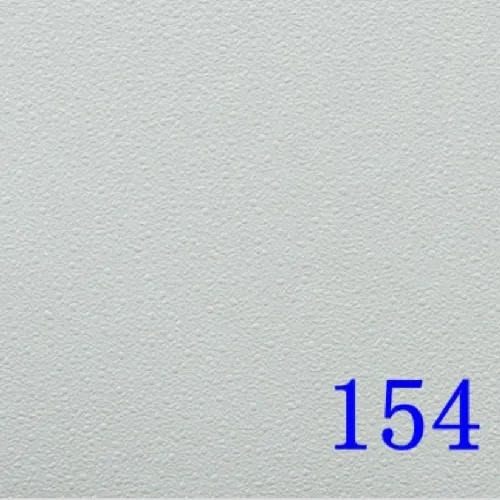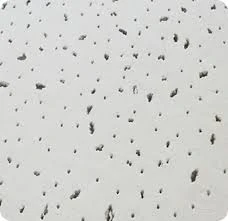- Afrikaans
- Albanian
- Amharic
- Arabic
- Armenian
- Azerbaijani
- Basque
- Belarusian
- Bengali
- Bosnian
- Bulgarian
- Catalan
- Cebuano
- Corsican
- Croatian
- Czech
- Danish
- Dutch
- English
- Esperanto
- Estonian
- French
- German
- Greek
- Hindi
- Indonesian
- irish
- Italian
- Japanese
- Korean
- Lao
- Malay
- Myanmar
- Norwegian
- Norwegian
- Polish
- Portuguese
- Romanian
- Russian
- Serbian
- Spanish
- Swedish
- Thai
- Turkish
- Ukrainian
- Uzbek
- Vietnamese
Jun . 09, 2025 03:35 Back to list
Affordable Suspended Grid Panels Low Cost per m2 & Fast Installation
- Suspended ceiling grid market overview and technical advantages
- Cost structure analysis per square meter
- Manufacturer comparison with performance data
- Custom grid solutions for specialized applications
- Installation best practices and workflow optimization
- Industrial case studies with verified results
- Procurement strategies for suspended grid
systems

(suspended grid)
Why Suspended Grid Systems Transform Modern Spaces
Modern construction increasingly adopts suspended grid solutions for their functional and aesthetic advantages. These systems provide essential infrastructure for integrated lighting, HVAC systems, and acoustic management. The global suspended ceiling market exceeded $12.3 billion in 2023, with grid systems constituting 68% of installations according to Construction Insights Weekly. Beyond conventional applications in commercial spaces, suspended grids now enable modular designs in healthcare facilities requiring antimicrobial surfaces and educational institutions needing impact-resistant panels. The fundamental suspended grid structure comprises primary runners, cross tees, and perimeter trim that distribute weight loads efficiently, supporting up to 45kg/m² when properly engineered.
Breaking Down Suspended Ceiling Grid Costs
Multiple variables determine final suspended ceiling grid cost per m². For standard commercial projects, material expenses typically represent 60-65% of total project costs:
Base material prices range from £3.80-£7.20/m² for galvanized steel systems and £4.30-£9.10/m² for aluminum grids. The type of suspended grid panel significantly impacts budgets – mineral fiber tiles cost £8-£15/m² while acoustic wood panels reach £22-£45/m². Additional factors include seismic certification requirements (adding 15-20% to grid costs), fire rating compliance (7-12% premium), and custom finishes. Comprehensive installation packages typically cost £14-£28/m² depending on project complexity and regional labor rates. Building professionals can reduce expenses by 18-22% through bulk purchasing and standardized grid configurations.
Manufacturer Comparison and Product Specifications
Performance characteristics vary significantly across suspended grid manufacturers:
| Manufacturer | Material | Max Load Capacity | Fire Rating | Warranty | Price/m² (USD) |
|---|---|---|---|---|---|
| Armstrong Ultima | Galvanized Steel | 42kg/m² | Class A (ASTM E84) | 30 years | $9.20 - $11.80 |
| USG Dimensional | Aluminum Alloy | 38kg/m² | Class A | Lifetime limited | $10.50 - $15.25 |
| CertainTeed Symphony | Cold-rolled Steel | 45kg/m² | Class A (3-hour rating) | 20 years | $8.75 - $12.30 |
| Hunter Douglas Linear | Powder-coated Al | 35kg/m² | Class A | 25 years | $11.80 - $16.40 |
Seismic-rated systems command 15-30% premiums but provide essential structural compliance in earthquake zones. Sustainability certifications like EPD and LEED contribute to 3-7% cost differentials but reduce long-term environmental impact.
Custom Grid Solutions for Specialized Applications
Standard suspended grid products adapt to approximately 75% of commercial applications, while specialized projects require engineered solutions. Healthcare facilities often utilize copper-infused grid systems with 99.9% antimicrobial efficacy for infection control. Data centers implement electromagnetic shielding grids capable of reducing RF interference by 45-60dB. The suspended grid panel customization extends to:
- Curved configurations for architectural features (±15° bend tolerance)
- High-humidity versions with anti-corrosion coatings
- Integrated cable management raceways
- Extra-wide tees (up to 600mm) for mechanical access
Custom fabrication typically adds 25-40% to material costs but eliminates the need for field modifications that increase labor expenses by 18-35%.
Installation Workflow Optimization
Proper suspended grid installation follows sequenced methodology that impacts both performance and cost efficiency. Key steps include:
- Precise ceiling height determination accounting for MEP systems clearance
- Laser-aligned layout with perimeter anchors spaced ≤450mm
- Primary runner installation at maximum 1200mm intervals
- Cross tee connection with seismic clips where required
- Panel installation commencing from room corners outward
Professional installers achieve productivity rates of 80-120m² daily for standard configurations. BIM modeling reduces installation time by 30-45% through clash detection and optimized component prefabrication. Post-installation verification includes laser-level flatness checks maintaining ≤3mm variance across 3m spans.
Verified Performance Across Industries
Structured evaluation demonstrates how suspended grid systems deliver measurable improvements:
Educational Facility Case Study
London Academy implemented Armstrong Ultima grids with acoustic mineral panels. Post-installation monitoring showed:
- Noise reduction (NRC) increased from 0.35 to 0.85
- Reverberation time decreased from 1.8s to 0.6s
- Installation cost: £21.30/m²
- 3-year maintenance reduction: 62%
Industrial Application
Automotive plant utilized heavy-duty suspended grid supporting maintenance platforms:
- Load capacity validation at 52kg/m²
- Utility access time reduced by 40%
- Corrosion resistance validated in ISO 9227 salt spray testing
Strategic Acquisition of Suspended Grid Systems
When preparing to buy suspended ceiling grid systems, several procurement strategies optimize investment. Direct manufacturer purchases provide cost advantages of 12-18% for projects exceeding 5,000m², while regional distributors offer better logistics for smaller projects. Critical evaluation criteria should include:
1. Material certifications: ASTM C635, EN 13964 compliance
2. System compatibility with existing building infrastructure
3. Total lifecycle cost analysis (20-year projections)
4. Local technical support availability
5. Environmental documentation including HPD and EPD
Industry leaders provide virtual configuration tools that generate material takeoffs and pricing models dynamically. Current market trends indicate decreasing lead times from 6-8 weeks to approximately 18 days for standard orders, though custom solutions still require 4-6 week production cycles. Maintenance considerations favor suspended grid panel systems with tool-less access features that reduce long-term ownership costs by 15-28%.

(suspended grid)
FAQS on suspended grid
5组英文FAQs围绕关键词: Suspended Grid及其相关词Q: What is a suspended grid used in ceiling systems?
A: A suspended grid is a framework of metal tracks that supports ceiling panels, allowing for easy installation and maintenance. It creates a clean, suspended ceiling aesthetic in commercial buildings. This system improves acoustics and hides unsightly utilities.Q: What factors affect suspended ceiling grid cost per m2?
A: Costs vary based on material (e.g., steel or aluminum), location, and project complexity. Average suspended ceiling grid cost per m2 ranges from $5 to $20 in the US market. High-quality grids or specialized designs may increase this price per square meter.Q: How does a suspended grid panel function in installations?
A: A suspended grid panel is a modular piece that snaps into the grid to form a finished ceiling surface. It provides insulation, lighting, or decorative options for spaces like offices. Panels are easily removable for access to above-ceiling utilities.Q: Where can I buy suspended ceiling grid kits online?
A: You can buy suspended ceiling grid kits from major retailers like Amazon, Home Depot, or specialized suppliers such as Armstrong Ceilings. Prices and options are often listed on their websites, with delivery for DIY or professional projects. Always check for discounts and warranties.Q: Why choose suspended grid ceilings over other types?
A: Suspended grid ceilings offer flexibility, such as quick panel replacements and energy savings through better insulation. They are cost-effective due to simple installation and long-term durability. This system is ideal for modern, efficient building designs.-
Transform Interiors with PVC Gypsum Ceiling: A Stylish, Durable, and Moisture-Resistant SolutionNewsMay.19,2025
-
The Smart Interior Upgrade: Discover the Durability and Versatility of Gypsum Ceiling Access Panel SolutionsNewsMay.19,2025
-
The Smart Choice for Interior Design: Discover the Value of PVC Gypsum Ceiling SolutionsNewsMay.19,2025
-
Mineral Fiber Ceiling Tiles: The Smart Blend of Performance and AestheticsNewsMay.19,2025
-
Mineral Fiber Ceiling Tiles: The Superior Choice Over Gypsum for Sound and Fire SafetyNewsMay.19,2025
-
Mineral Fiber Ceiling Tiles: Eco-Friendly Strength and Style for Every CeilingNewsMay.19,2025







